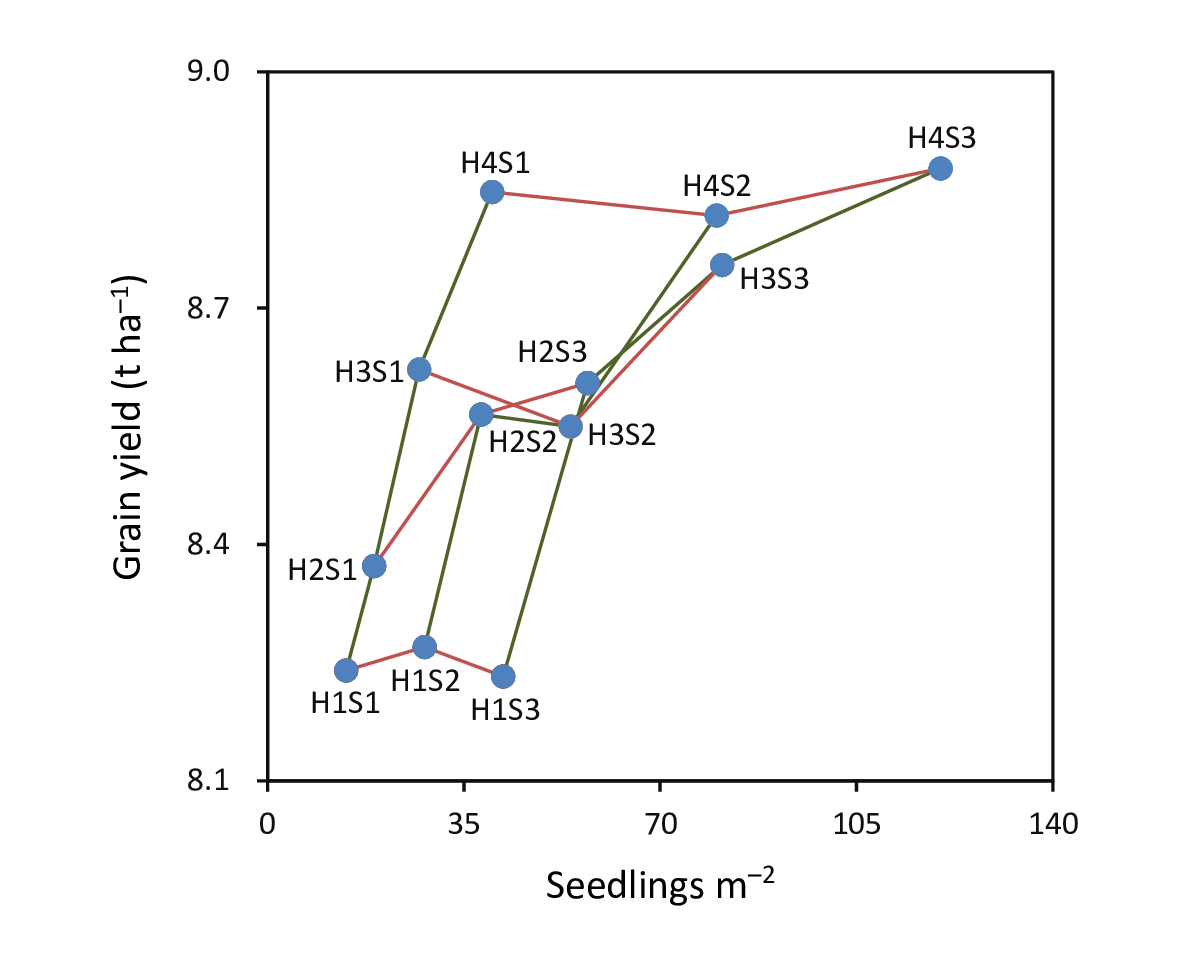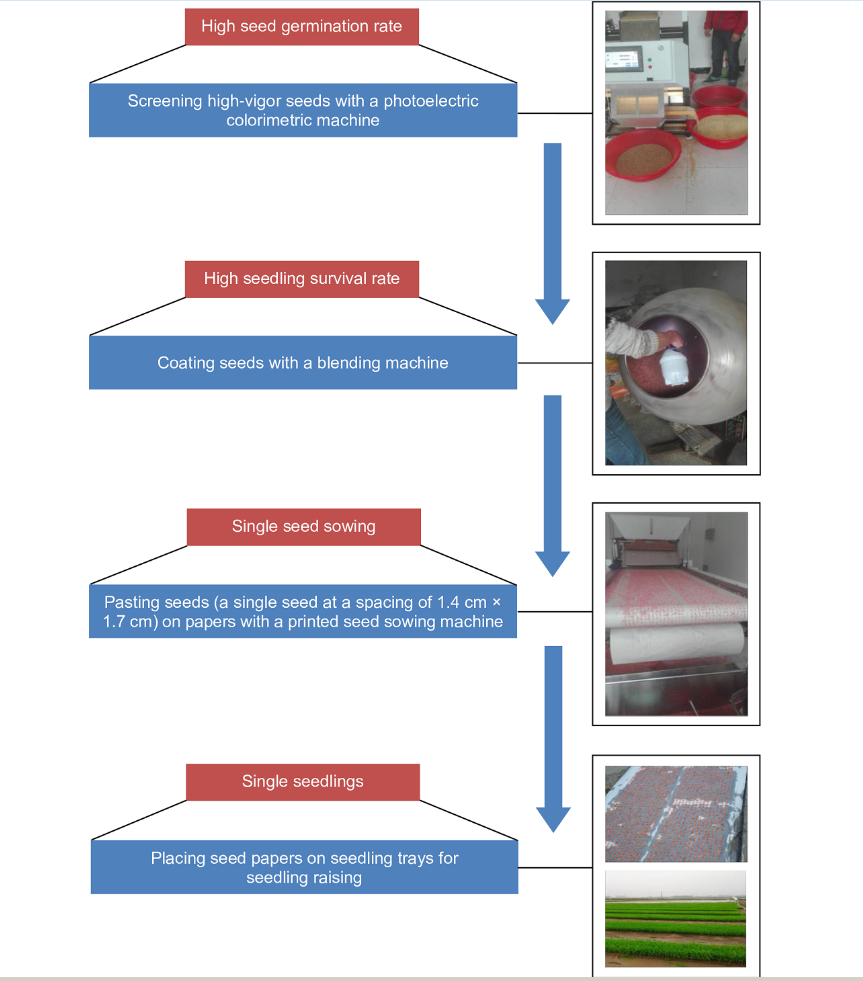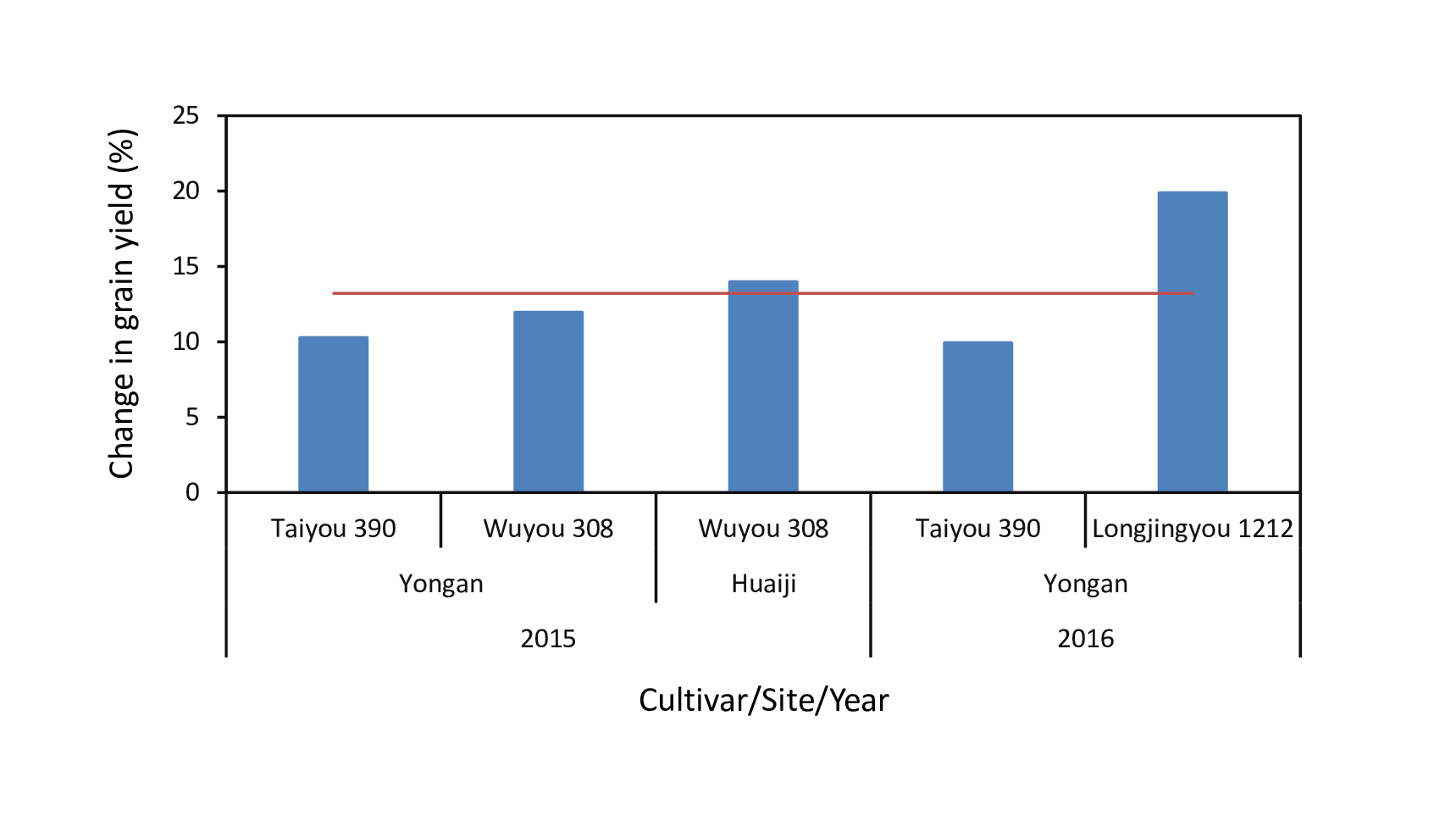Rice production plays a critical role in achieving food self-sufficiency in China where more than 65% of the population eats rice as a staple food. In order to produce enough rice, many novel rice technologies have been successfully developed and implemented in China. In particular, China was the first country to commercially exploit hybrid vigor (heterosis) in rice.
Why hybrid rice?
The development of hybrid cultivars has substantially increased the yield potential of rice. It is estimated that planting hybrid rice can feed 70 million more people in China annually. However, the planting area of hybrid rice in the country has declined since 1996 at a rate of about 0.18 million hectares per year (see Figure 1 below), presenting a challenge for national food security.
It is crucial to maintain or even increase the productivity of intensive cropping systems in China due to limited arable land per capita. In 2015, the arable land per capita in China was 0.08 ha, which was only 43% of the world average.

Why mechanical transplanting?
The decrease in the planting area of hybrid rice in China is related to the shift in rice establishment methods from manual transplanting to direct seeding and mechanical transplanting.
Although direct seeding provides obvious benefits such as saving labor, it also has the potential to (1) increase environmental and health risks due to more frequent herbicide application 2 to 3 times higher than other establishment methods per rice-growing season; and (2) reduce the yield because of the use of short-duration cultivars in intensive rice-based cropping systems.
In hybrid rice, direct seeding and mechanical transplanting can increase seed inputs and diminish the advantages of heterosis, e.g., hybrid rice produces smaller panicles. Both can influence the cultivar choices of rice farmers who might tend to favor cheaper inbred (non-hybrid) rice cultivars. There is an urgent need to develop rice establishment methods for hybrid rice and consequently reverse the declining trend of hybrid rice use in China. Thus, our research team chose to improve mechanical transplanting for hybrid rice production.

Why dense transplanting of single seedlings?
In transplanted rice, seed inputs are determined by hill density and seedlings per hill. These two components are also important in yield determination because they greatly affect the number of panicles per unit land area and the number of spikelets per panicle.
In 2012 and 2013, we conducted field experiments in Changsha in Hunan Province and in Chengmai in Hainan Province to determine the yield performance of hybrid rice grown under twelve combinations of hill density and seedlings per hill. The results showed that high grain yield and low seed inputs were concurrently achieved in hybrid rice grown under dense transplanting of single seedlings (H4S1) (see Figure 2 above). The high grain yield in hybrid rice grown under H4S1 occurred because a compatible relationship between panicles per unit land area and spikelets per panicle was established.
Another study we conducted showed that hybrid rice transplanted as single seedlings did not necessarily require more nitrogen fertilizer to produce high grain yield. These findings suggest that dense transplanting of single seedlings is a feasible way to achieve high grain yield and low seed inputs in hybrid rice production.

How is mechanically dense transplanting of single seedlings achieved?
Dense transplanting is easy to do using a rice transplanter. For example, a high hill density of 25 cm × 11 cm (36 hills m–2) can be achieved with a PZ80-25 high-speed rice transplanter manufactured by Dongfeng Iseki Agricultural Machinery Co., Ltd. Therefore, the key to developing mechanically dense transplanting of single seedlings for hybrid rice is to solve the technical difficulty of raising single seedlings.
There are three technical points to achieve in raising single seedlings for mechanical transplanting: (1) single seed sowing, (2) high seed germination rate, and (3) high seedling survival rate. In 2015, we successfully established a system to raise single seedlings for mechanical transplanting of hybrid rice by integrating photoelectric colorimetric seed screening technology, seed coating technology, and printed seed sowing technology (see Figure 3 above). This system makes it is possible to realize the adoption of mechanically dense transplanting of single seedlings in hybrid rice production.

How does mechanically dense transplanting of single seedlings perform in the field?
In 2015 and 2016, we conducted field experiments in Yongan in Hunan and in Huaij in Guangdong Province to compare the yield performance of hybrid rice grown under mechanically dense transplanting of single seedlings and conventional mechanical. The results showed that grain yield was 10–20%, or an average of approximately 13%, higher in hybrid rice grown under mechanically dense transplanting of single seedlings than under conventional mechanical transplanting (Figure 4).
Improvement in seedling quality, panicle size, and dry weight per stem was responsible for the higher grain yield in hybrid rice grown under mechanically dense transplanting of single seedlings. In addition, we demonstrated the adoption of mechanically dense transplanting of single seedlings for hybrid rice production located at Oujiangcha, Yongan, Daguang, Pailou, and Pingbei in Hunan Province in 2016 and 2017. The demonstrations indicated that the adoption of mechanically dense transplanting of single seedlings can increase grain yield by about 10%, reduce seed inputs by about 75%, and prolong seedling age by about 10 days (allowing use of cultivars with longer growth durations in intensive rice-based systems) compared to the use of conventional mechanical transplanting.
These facts suggest that popularizing mechanically dense transplanting of single seedlings will help promote the development of hybrid rice in China.
Acknowledgment
We are very grateful to the other members of our research team Yuanfu Xiong, Fangbo Cao, Xiaobing Xie, Xuefeng Zhou, Jiana Chen, Shuanglü Shan, and Yumei Wang for their efforts and to Zhongxiao Hu of the China National Hybrid Rice Research and Development Center for sharing data of the hybrid rice planting area in China. This work was supported by the National Key R&D Program of China and the Earmarked Fund for China Agriculture Research System.
______________
The authors are affiliated with the Southern Regional Collaborative Innovation Center for Grain and Oil Crops, Hunan Agricultural University, China.






Thanks for such kind of information, it makes sense. To increase N use efficiency in hybrid rice transplanted as single seedlings under moderate to high soil fertility conditions, we must select a suitable hybrid rice.
Densely populated areas in rice leaves high disease not occasionally but regularly. What measures should you applied to reduce entities such as Drechslera spp (1,2,3,4);Curvulari spp(1,2,3); cercospora oryzae and Bakanae having white and black conocytic mycelium during crop season and How to maintain MRL level in rice?